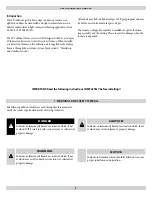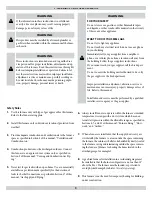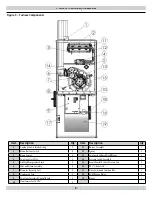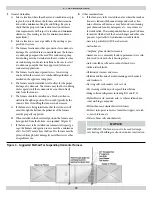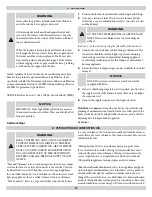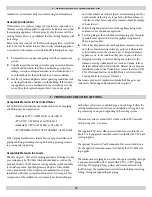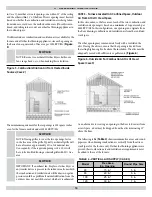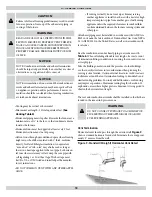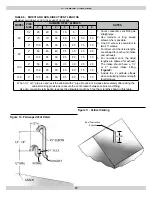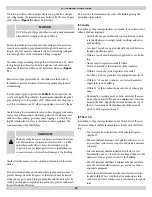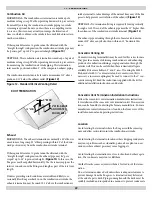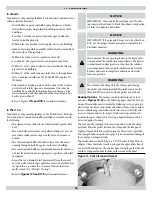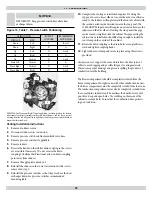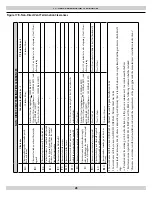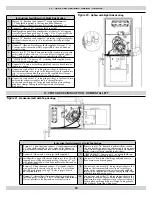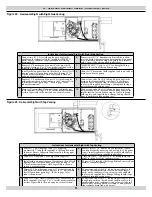
11 - DETERMINING COMBUSTION AIR
in Case 1), must have two air openings; one within 12” of the ceiling
and the other within 12” of the fl oor. Th
e air openings must be sized
based on whether the combustion and ventilation air is being taken
from indoors or outdoors, the method outdoor air (if used) is intro-
duced, and taking into account any other fuel burning appliances in
the confi ned space.
If suffi cient indoor combustion and ventilation air is available for the
furnace and all other fuel burning appliances, size each opening on
the basis of one square inch of free area per 1000 BTU/Hr. (
Figure
5
)
NOTICE
NOTE: Be sure to consider all clothes dryers, bathroom
fans, range hoods, etc., when making this calculation.
Th
e minimum requirement for these openings is 100 square inches,
even for the furnace models under 100,000 BTU/Hr.
NOTICE
NOTE: If using grilles to cover the two openings, factor
in the free area of the grille. Typically, a sidewall grille will
have a free area approximately 50% of its nominal size.
Consequently, if the required opening is 10 x 10, it will
have to be doubled if using a sidewall grille with 50% free
area.
NOTICE
IMPORTANT: If an exhaust fan, fi replace, clothes dryer or
any similar device is present in the indoor area from which
the combustion and ventilation air will be drawn, negative
pressure could be a problem if natural infi ltration from the
outdoors does not match the rate at which air is exhausted.
Figure 5 - Combustion/Dilution Air From Heated Inside
Sources (Case 2)
CASE 3 - Furnace Located In A Confi ned Space, Outdoor
Air From Attic Or Crawl Space
In this circumstance, the free area of each of the two combustion and
ventilation air openings is based on a minimum of 1 square inch per
4000 BTU/Hr. In this confi guration, one opening can originate from
the fl oor drawing combustion and ventilation air from the ventilated
crawl space.
Th
e other opening may communicate freely with a ventilated the
attic. If using the attic air, ensure that the opening is ducted from
the ceiling high enough to be above the insulation. Th
e attic must be
adequately vented with soffi t vents or gable vents. (
Figure 6
)
As an alternative to creating an opening in the fl oor to draw air from
a crawl space, a duct may be dropped from the attic terminating 12”
above the fl oor.
Th
e following table (
Table 4
) shows minimum free areas and round
pipe sizes when drawing combustion air vertically from the attic or
crawl space for the furnace only. If other fuel burning appliances are
present, their combustion air and ventilation air requirements must
be added to those of the furnace.
TABLE 4 - VERTICAL AIR SUPPLY (CASE 3)
Model
Free Area
Ea. Opening
Round Pipe Size
60
15 in.²
5 in.
80
20 in.²
6 in.
100
25 in.²
6 in.
120
30 in.²
7 in.
Figure 6 - Outside Air For Combustion, Attic Or Crawl
Space (Case 3)
16


